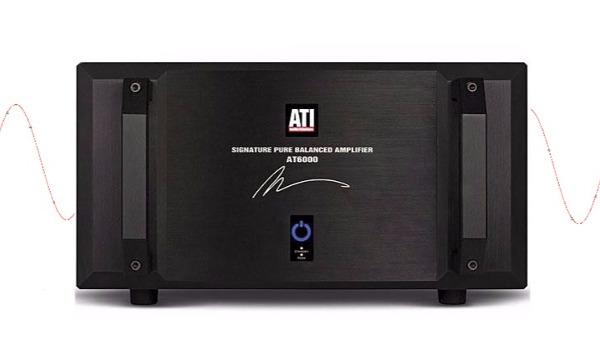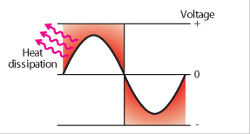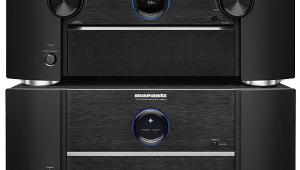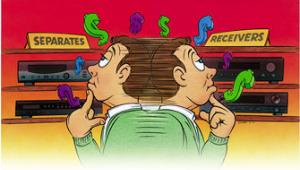I enjoyed this article; it's informative without being unduly technical for those of us who don't have engineering degrees. However, aren't waves are made up of compression and rarefaction? The author wrote, "rarification."
Class Act: Amplifier Classes Explained

Before I begin, let’s note that amplifier class has nothing whatsoever to say about quality or performance of a specific audio product. It’s simply a shorthand to describe an amp’s circuit topology: which of the four or five general types of amplification circuit it employs. Each has its own advantages, disadvantages, distortions, and quirks, and the designer’s choice of class may have as much to do with cost limits, packaging and efficiency requirements—or even marketing imperatives—as performance.
But first, what is the role of an amplifier? Essentially, it takes a low-level signal from your source component, applies power from your electrical grid (or perhaps a battery) and spits out an audio signal on the other end that perfectly follows the contours of the original but is, well, bigger.
Think of a knob connected to an ample source of direct-current power at one end, and to a loudspeaker at the other. Now imagine for yourself the super-power ability (Behold: AudioMan!) to twist the knob fast enough to perfectly follow an audio signal coming in from elsewhere—perhaps playing in your head. Your low-effort twisting of the knob would result in a high-powered replica of the signal that would drive the loudspeaker. In effect, this is an amplifier, with transistors or vacuum tubes replacing the knob, and waveform-following flow-control circuitry replacing AudioMan.
In essence, an amplifier is the intermediary between your loudspeakers and the electrical grid; one that takes the tiny signal from the audio source you choose, which on its own could barely drive ear buds, and uses it to modulate vast amounts of power to drive your speakers to the level you choose. Ever wonder why the British refer to vacuum tubes, the original electronic devices used to perform this task of amplification, as “valves?” It's a remarkably succinct description of what an amplifier actually does. The incoming small audio signal, from CD player, smartphone, streaming box, or whatever, goes to the input circuitry, the wall-outlet provides the ample-current supply, and the transistors or tubes hook up to the speaker and act as valves that control the flow of a much larger signal.
The reality is more complex, of course, but only a little. Keep in mind that an audio signal is actually a sine wave, with both positive and negative portions to the signal. Inside an amplifier are both positive and negative DC voltages (“rails” in double-E-speak) that supply the current for the positive- and negative-going halves of the output, respectively. These in turn correspond to the loudspeaker diaphragm moving towards us (compression), and away from us (rarification), while the speaker at rest corresponds to zero: the amplifier at idle. How each circuit handles this reality is the basis of the following classes.
So here we go...
Class A
In a nutshell, both the positive and negative portions of the audio signal are handled by what is effectively a single output device. Be it transistor or tube, the device is “biased” so that the entire audio waveform is reproduced within the useful amplifying range of a single device or rank of paralleled devices. This is accomplished by mixing in a certain amount of DC “bias current,” which shifts the whole signal “up” so that both halves lie within the device’s linear operating area. This means the device is passing current 100 percent of the time. But most of the time the output current is very small, as it is while the music is not at peak level. More particularly, while each cycle of the signal is below its peaks, whether positive or negative, only a small fraction of the current the amp consumes actually goes into motivating the loudspeaker. The rest is lost as heat. Class A amps are notoriously inefficient, requiring several times their audio-power ratings in AC watts from the wall socket, while the heat output from a large Class A unit will keep a listening room comfortable in January, even here in New Hampshire—or just the opposite, in August in Alabama.
Class B
A brutish solution, as you only amplify half the waveform and ignore the rest. No bias current need be dissipated, and there’s no idling downtime while the other half of the wave is amplified. But, as you can well imagine, distortion is very high indeed. Class B amps were adequate for things like WWII submarine P.A. systems, bull horns, and the earliest transistor radios, but beyond a handful of dedicated subwoofer amplifiers over the years it really never fit for music reproduction.The obvious solution is to put two Class B amps— one inverted—back-to-back, a configuration termed “push-pull.” While one is amplifying its half-wave, either positive or negative, the other is completely “off,” cooling and consuming zero current, and neither one need dissipate the heat from large bias currents. The fly in the ointment is the transition from positive half to negative: output devices themselves (all types) tend to become increasingly non-linear as they approach zero current-flow, and each time one half turns “off” and hands duties to its mate you get discontinuities that are difficult or impossible to correct. Together these yield a particular, rather nasty form of harmonic distortion called crossover distortion. (This has nothing to do with loudspeaker crossovers.)
Class A/B (or AB)
 Therefore, the solution is that a small amount of bias is applied to both halves (each with the appropriate polarity, of course), such that they operate, at small signal levels, effectively as a single Class A device or rank. As signal levels increase, the bias is progressively less meaningful, transitioning to fully Class B operation; usually this occurs above an effective output of around 1 watt, though there are “high-bias” designs that elect to deliver larger Class A operating power at concomitant sacrifices in heat and efficiency. That said, conventional Class A/B designs are two or more times as efficient Class A equivalents, thus A/B remains a popular topology used in a large quantity of consumer audio products today.
Therefore, the solution is that a small amount of bias is applied to both halves (each with the appropriate polarity, of course), such that they operate, at small signal levels, effectively as a single Class A device or rank. As signal levels increase, the bias is progressively less meaningful, transitioning to fully Class B operation; usually this occurs above an effective output of around 1 watt, though there are “high-bias” designs that elect to deliver larger Class A operating power at concomitant sacrifices in heat and efficiency. That said, conventional Class A/B designs are two or more times as efficient Class A equivalents, thus A/B remains a popular topology used in a large quantity of consumer audio products today.
Class C
Forget about it. It’s a very high-distortion, high-efficiency layout used only in radio-frequency (transmitter) applications where the distortion can be tuned outside the band of interest.
Class D
We’ll be coming back here in a moment, but we need to cover a couple other amplifier classes first…
- Log in or register to post comments


This source of information can be very helpful to you. Now you don't have to spend several days looking for reviews and any important data.

OrderTermPaper company is a reputable and appreciated service for college students. The team of professionals is ready to help learners succeed with the most complicated assignments.











































